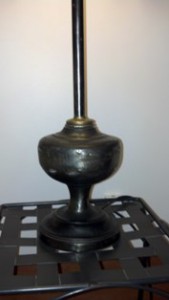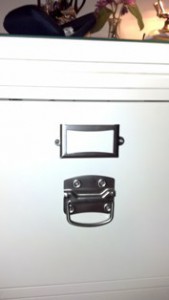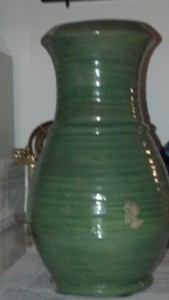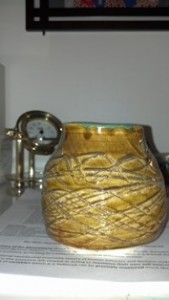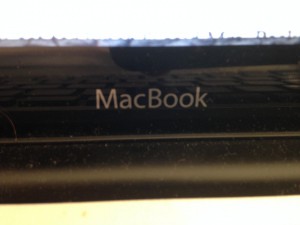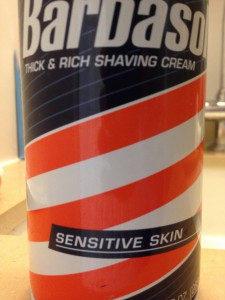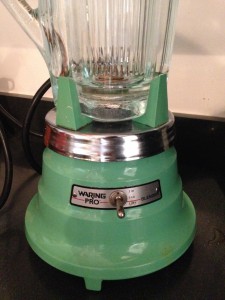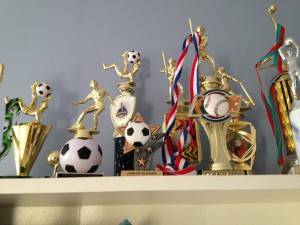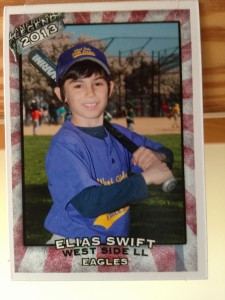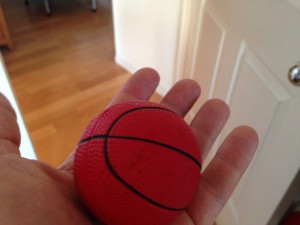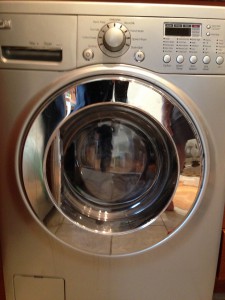Category Archives: Uncategorized
Night Photography/Objects
Some of the Robert Brook photographs of industrial ruins do seem to describe and convey a history and invite one to wonder not only about what lies beyond, but what was. (i.e. in “Gateway to Ruins of Former Brewery”). What’s striking is that many of these photographs could have been taken almost anywhere, perhaps revealing a very similar history. Abandoned manufacturing sites and bleak industrial landscapes across rivers or from a highway could just as easily speak of a history of social and economic decay in the U.S. and in so many other parts of the ‘advanced’ industrialized (or deindustrialized) world. Perhaps most jarring is that this vision of that world seems lifeless.
Also looked at the shared link to Detroit photographs. These colorful images reveal there is still some life amidst the ruins. Latour notes that objects have a role to play in the social – to tell a story, (i.e. ‘”express power relations…reinforce social inequalities…”‘) Viewing these two collections of photographs reveals their ability to convey much about the present and the past.
Night Photography
It was interesting to look at the Robert Brook photos on the less-light site. I wouldn’t describe them as being made by taking away daylight so much as that they are made with artificial light-light from man-made sources. I also don’t think that these photos give life to inanimate objects. So many of them show empty roads, walls and fences. It is a bleak unpopulated post-industrial world, the sterile world that Edensor hates. No romance of the ruin here. Just asphalt.
There are a couple of night photographers whose work I really love. One is O. Winston Link. He was an early pioneer of night photography inventing some flash techniques. While I couldn’t find a great source for his work, there are some images here:
http://www.danzigergallery.com/artists/owinston-link/16
I don’t know if you could consider the train in Link’s a “mediator” or just an obsession.
Completely different is Todd Hido. I recently took a class to see some shows in Chelsea and we saw his recent work and the students didn’t like it at all but every one of them could identify the mood of the pictures as sad and desolate.
http://www.toddhido.com
Click on the link homes at night. Using the color of the light and the weather, he infuses ordinary residential buildings with a good deal of emotion.
And while I am at it, two of my favorite photographer’s of ruins are:
Andrew Moore-the detroit series in particular
http://www.andrewlmoore.com/photography/detroit/
Robert Polidori-Chernobyl, Katrina
Google robert polidori chernobyl and select images.
May 2 Response Question re: objects
1. Walter Benjamin, “The Work of Art in the Age of Mechanical Reproduction.”
2. Bruno Latour, Reassembling the Social: An Introduction to Actor-Network Theory. (Pages 1-17 & 63-86.)
3. Tim Edensor, Industrial Ruins: Space, Aesthetics and Materiality. (Chapters 1-2 or pages 1-52.)
4. Bill Brown, “The Secret Life of Things (Virginia Woolf and the Matter of Modernism)” in Modernism/Modernity 6.2 (1999): 1-28.
In one way or another, Benjamin, Brown, Edensor, and Latour attempt to amplify the power of the object in the fields of sociology and philosophy. In our next seminar we will examine the distinctions between their propositions — between aura, life, agency, permanence, mediation, network, etc. One area of difficulty I would like to examine during the next seminar is whether or not (or how) a researcher of objects (historical, social, theatrical, artistic, architectural) can use anything other than texts and languages in the production and dissemination of knowledge. In other words, if the physical world is at least on par with language in its ability to construct social networks, it would follow that non-verbal objects also have the ability to effectively describe, analyze, and deconstruct social phenomena and history. How could this be done? If you can think of a way to “do” history or social analysis without text, please jot down your ideas here. Perhaps you could even do it without text! In addition to using the readings for this week, it might be helpful to recall the theme of our seminar and some interdiscipline that might reveal a “material” path to knowledge.
I’ve also provided a link to a gallery of photographs that seem to give life to inanimate objects through the manipulation of light and long exposure times. http://www.less-light.com/. I thought it was interesting that the vibrancy of the objects becomes apparent when a common element is subtracted: daylight. This reminds me of Latour’s argument that we can identify the mediators in social networks by their permanence, their ability to withstand changes around them.
Skeuomorphs in Computing? EVERYWHERE!!!
As Gessler reminds us, in the beginning the computer was a human in charge of doing calculations. Later the computer became the machine. The human calculators lost their jobs to the COMPUTER machines, and became programmers who used a programming LANGUAGE to talk to computers. The human desktop skeuomorphed into a computer DESKTOP within a WINDOWS operating system. We stored our digital information in FILES which are organized within FOLDERS inside the computer MEMORY. Now, computer scientists want to make computers INTELLIGENT using machine LEARNING technologies like NEURAL NETWORKS and GENETIC algorithms.
I guess all this results from the tension in our neolitic brains between change and permanence. Skeuomorphs provide a sense of permanence in a perpetually changing and evolving environment. Again, quoting Gessler, skeuomorphs “help us map the new into an existing cognitive structure, and is so doing, give us a starting point from which we may evolve additional alternative solutions.” It sounds like the use of skeuomorphs is a good pedagogical strategy.
Before I forget, I will post this note in the OPENLAB, and you will be able to read it in the WEB.
Skeumorphs
Skeumorphs in Economics (?) and at home:
I really had to think about this concept as applied to Economics. Perhaps one can think of this in terms of representations commonly used in conveying traditional economic concepts such as tradeoffs and opportunity cost (the cost of making one choice over another necessitates sacrificing increasingly more of the other because different labor and capital resources are used). For instance, tradeoffs in terms of resource use is often expressed in terms of the choice between “guns” or “butter,” which are used to represent the choice between more or less defense spending vs. more or less spending on social or health or educational services. Neither of course is “guns” or “butter.” Of course, some defense spending may technically in part mean ‘guns’, but obviously this choice is far more complex.
Economists have also often used the “widgets” and “gadgets” analogy to represent the concept of making choices about various combinations of products than can be produced with a given amount or type of resources. I suppose we all purchase new “gadgets” at times, but it can be argued that these are something entirely different.
Some possible examples from around the house: Some are old objects whose original purpose has been transformed and repurposed, but also serve that ‘decorative’ function (not so sure about this one); others – new objects that have been designed to appear as though they were “discovered” old objects; and then – those with features that are intentionally designed to replicate some earlier form of authenticity, but simply serve a decorative function.
Skeumorphs found at home:
Old oil lamp – now a lamp base
“Old” hardware on new file cabinets
New vase with intentional flaws
Handmade vase crafted to look old
skeuomorphs in architecture
Anne Marie is right! Architecture and construction is very skeuomorphic:
- vinyl or aluminum siding that looks like wood clapboard (not to mention the imprinted wood-grain texture on same)
- asphalt shingles colored or textured to appear like wood shakes or slate
- tin ceilings imprinted to appear as plaster
- wood ceiling beams that are applied for appearance and not structural
- veneer brick wall panels, pre-fabricated and lifted into place on a tall building
- linoleum imprinted to look like ceramic tile, or brick, or wood flooring
- plastic laminate counter tops designed to look like granite
- exterior window shutters applied fixed to the walls, too small to cover the window even if they could move
It is interesting (and I think true) that residential construction seems to be more skeuomorphic than large-scale commercial construction, i.e., skeuomorphs are used to maintain a traditional, conservative appearances.
Skeuomorph: thing or object?
I had difficulty finding examples around my home. I found items and technologies that cited the past but still had functional purposes — these don’t count I assume. A skeuomorph can be kitschy but not all kitsch is skeuomorphic. I eliminated brand names and logos out of hand. I had great hopes of finding some SKEUOs in my toolbox, but the items there were all insistently functional. Can an image be a skeuomorph, or only things, or technologies? I wonder if Heidegger can help us sort out the definition. For MH, a hammer is a “thing” because it is purely functional. Here is Graham Harman’s summary:
“As Heidegger puts it, ‘the less we just stare at the hammer-Thing, and the more we seize hold of it and use it, the more primordial does our relationship to it become, and the more unveiledly is it encountered as that which it is—as equipment’ (Heidegger, 1962, p. 98). As opposed to the Vorhandenheit (or ‘presence- at-hand’) of phenomena in consciousness, the being of equipment is called Zuhandenheit (or ‘readiness-to-hand’). The latter term, ready-to-hand, refers to equipment that remains concealed from view insofar as it functions effectively. Present-at-hand, the opposite term, refers to at least three different sorts of situations. In Heidegger’s writings objects present in consciousness are called present-at-hand, and so are ‘broken tools’ that become obtrusive once they no longer function effectively, and so is the physical concept of objective matter occupying a distinct point in space-time. At any rate, present-at-hand and ready-to-hand are not two different types of entities. Instead, all entities oscillate between these two separate modes: the cryptic withdrawal of readiness-to-hand and the explicit accessibility of presence-at-hand.”
Sorry for cut-and-paste… but I need to reiterate these differences because I keep forgetting them. In any case, it seems to me that a skeuomorph can only be a “present-at-hand” object. Always out of date and citational, a skeuo can never be functional. It never withdraws.
1. not a book.
2. not a pole grabbed by a medieval patient to encourage flow during bloodletting.
3. not sure about this one.
4. not gold, not silver.
5. not a baseball trading card.
6. not a basketball.
7. not stainless steel.
Skeuomorphs
An argument for arts in the university your brother-in-law could understand
That said, Egan’s dichotomous arrangement of human intelligence is worth a strong riposte.
http://www.nytimes.com/2014/03/22/opinion/egan-creativity-vs-quants.html?partner=rssnyt&emc=rss

